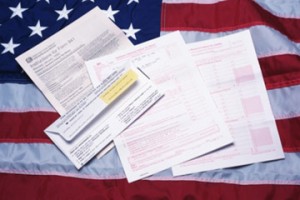Key Highlights of the COVID-19 Relief Programs
by Tony Pandiscia
We have compiled the following useful and concise information for your reference as you consider the various planning opportunities available to address the impact of the COVID-19 situation on your business operations. After studying the recently enacted law and interacting with other professionals, by parsing through the voluminous CARES Act, Families First Coronavirus Response Act (“FFCRA”) and relevant peripheral materials, the following includes the highlights of the relevant relief available to you via the government stimulus packages:
- Loans available under the CARES Act provide the largest measure of assistance available via what is termed the “PPP”. The borrowing amount is capped at a formula calculating the average monthly “Total payroll” incurred in a trailing 12-month period. “Total payroll” includes employee compensation (not to exceed $100,000 annually per capita) + health insurance (employer share only) + PTO. PPP loans will be obtained through traditional lending relationships (local / national banks) and NOT the SBA; best bet is to work with lenders with whom a borrowing relationship already exists as it may help expedite the process. Our understanding is that local lenders will have finalized the application process and be in a position to initiate the approval process by April 3.
- Forgiveness of any “PPP” loans received under the CARES Act will be available if proceeds are used for payroll, rent, utilities AND employee labor force or employee compensation after April 1 remains consistent with a pre-April 1 “measurement period”.
- Independently, “Disaster Relief Loans” (referred to as “EIDL”) are available under the more traditional borrowing program offered by the SBA.
- What is interesting and somewhat confusing, the EIDL program administered by the SBA also includes a grant opportunity for up to $10,000 for businesses that have been severely effected by COVID-19. The grant does not require repayment, nor does it obligate the recipient to also apply for an EIDL loan; furthermore, it does not preclude the business from also applying for the PPP. Many businesses will apply for the grant through the SBA (which should be received on an expedited basis according to the Federal government’s stimulus objectives) while simultaneously applying for the PPP through their local lender.
- NC-based businesses may also apply for loans of < $50,000 under the “NC COVID-19 Rapid Recovery Loan” program administered by a consortium of local lenders and stakeholders, and funded by the “Golden Leaf Foundation”. The loans will have favorable repayment terms and the application process is available on-line.
- Payroll tax deferment is available for employer FICA and Medicare due 4/1/20 – 12/31/20. Any tax amounts deferred must be repaid in no less than 50% < 12/31/21 and the remaining 50% < 12/31/22.
- Payroll tax credit is available up to $10,000 by meeting certain workforce retention criteria [50% of wages paid to retained labor force during period when business gross revenues decline > 50%]
- EFMLA [“Family leave”] and EPSL [“Sick leave”] benefits paid out to qualifying employees will generate a payroll tax credit (rather than the normal deduction). The mandatory leave provisions may not be applicable to anyone in the healthcare industry, however if a business already has family leave policies in place as part of their employee benefits, the policies will need to be adhered to with regard to relevant claims made by employees whom are incapable of working due to COVID-19 issues.
- Employees whom are separated from service via layoff can qualify for Unemployment Insurance. Filings are now made via on-line platform by the terminated employee directly. Under NC Law, even employees whom were not fully terminated but experienced severe decrease in work hours may qualify to receive partial benefits. Anyone properly terminated would be ineligible for EFMLA or EPSL; in addition, employees severed from service whom were participants in the group health plan will need to offered COBRA coverage. [Note for exit- counseling purposes and temporary layoff planning, a terminated employee is typically not required to self-pay the monthly premium amount until after a 59-day grace period; therefore, if a business anticipates rehiring the terminated employee < 59 days following the expectation of a return to business activity suspended due to COVID-19, there may not be any additional premium cost to the employee nor significant interruption in health care coverage. [However, each business should consult with its health plan advisor or representative to verify no other “breaks in service” nor “on-board delays” in coverage would apply under the terms of the group plan in place.]
Details continue to be released and we will keep you posted as to any new developments, and of course feel free to contact us should you need further information.


 In an effort to streamline the ever-changing world we live in with the COVID-19 virus, here are some links that are all related to updated tax changes, small businesses, individual sick leave, and other filing requirements. As more information is released, it will be added at the top of this list.
In an effort to streamline the ever-changing world we live in with the COVID-19 virus, here are some links that are all related to updated tax changes, small businesses, individual sick leave, and other filing requirements. As more information is released, it will be added at the top of this list.
 For many entrepreneurs, the biggest question they should ask themselves after deciding what kind of business they want to have is what kind of entity should the business be established as? This is very important since the choice they make can have a long-term impact on their profitability and security. This article will address some of the benefits of Incorporating a Sole Proprietorship into a subchapter
For many entrepreneurs, the biggest question they should ask themselves after deciding what kind of business they want to have is what kind of entity should the business be established as? This is very important since the choice they make can have a long-term impact on their profitability and security. This article will address some of the benefits of Incorporating a Sole Proprietorship into a subchapter 




 me Tax Return, you should file a Form
me Tax Return, you should file a Form 
 Beginning in 2014, individuals and families with low or moderate income could purchase health insurance through the Health Insurance Marketplace, also known as the Exchange. The premium tax credit is an advanceable, refundable tax credit designed to help those individuals and families. The credit could be paid in advance to insurance companies to lower the monthly premiums or the credit could be claimed with the individual tax return. If the credit was paid in advance, individuals must reconcile the amount paid in advance with the actual credit computed on the individual’s tax return.
Beginning in 2014, individuals and families with low or moderate income could purchase health insurance through the Health Insurance Marketplace, also known as the Exchange. The premium tax credit is an advanceable, refundable tax credit designed to help those individuals and families. The credit could be paid in advance to insurance companies to lower the monthly premiums or the credit could be claimed with the individual tax return. If the credit was paid in advance, individuals must reconcile the amount paid in advance with the actual credit computed on the individual’s tax return.
 There is often confusion surrounding who can claim college tax credits and for how much. The two college tax credits are the
There is often confusion surrounding who can claim college tax credits and for how much. The two college tax credits are the 
 There are several educational tax credits and deductions available, but how and when do they apply? The IRS recently published the article “
There are several educational tax credits and deductions available, but how and when do they apply? The IRS recently published the article “